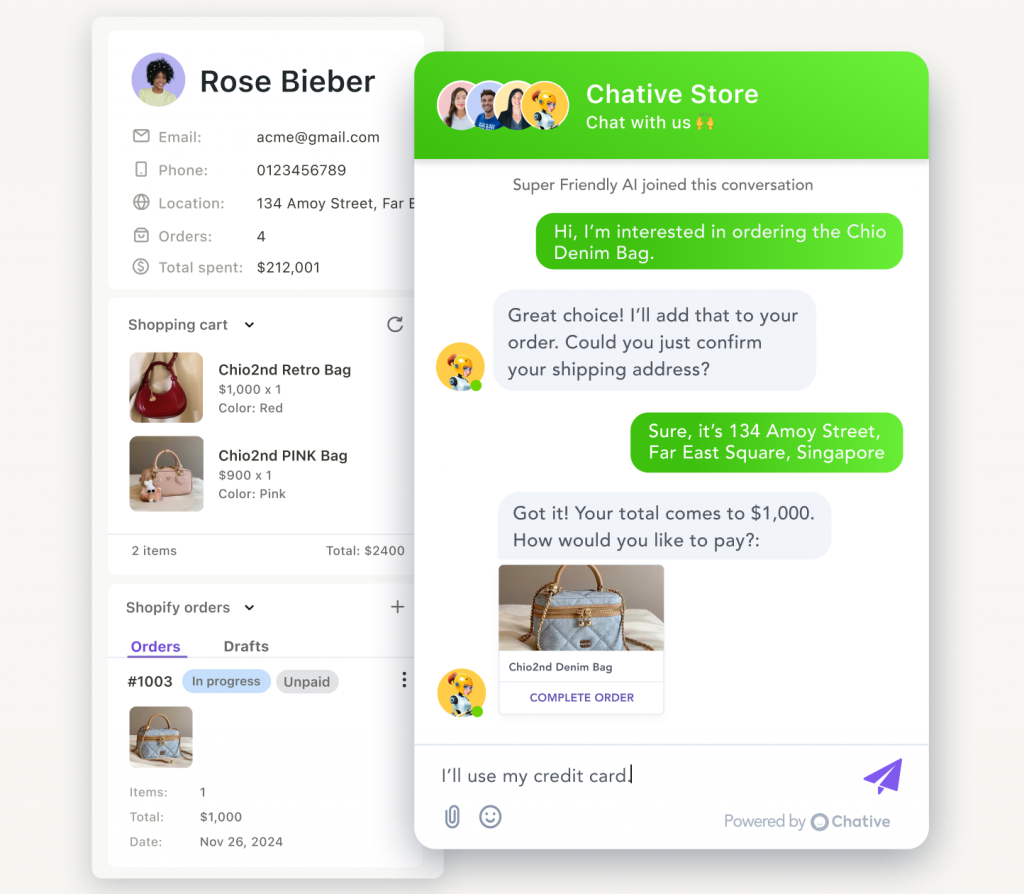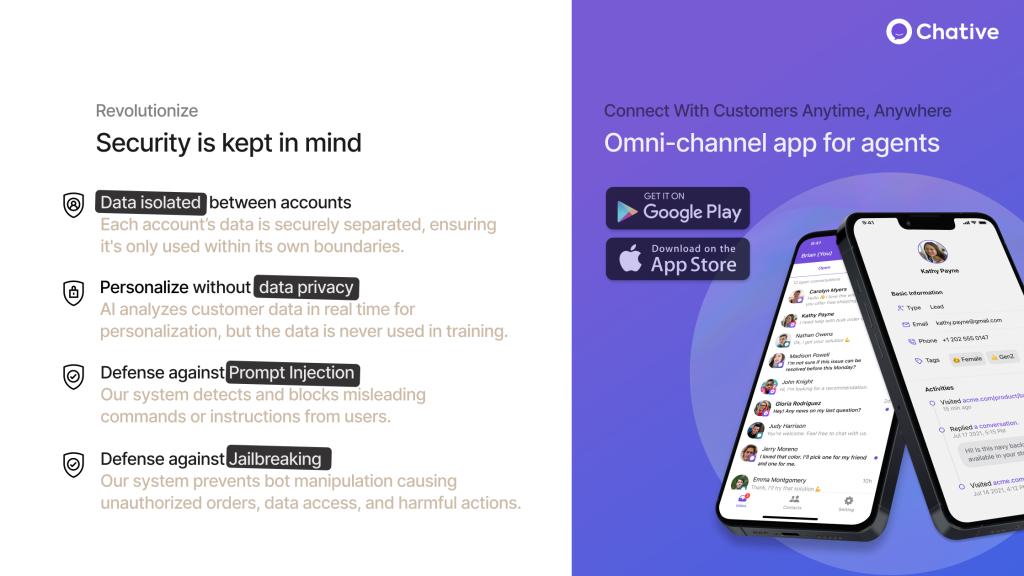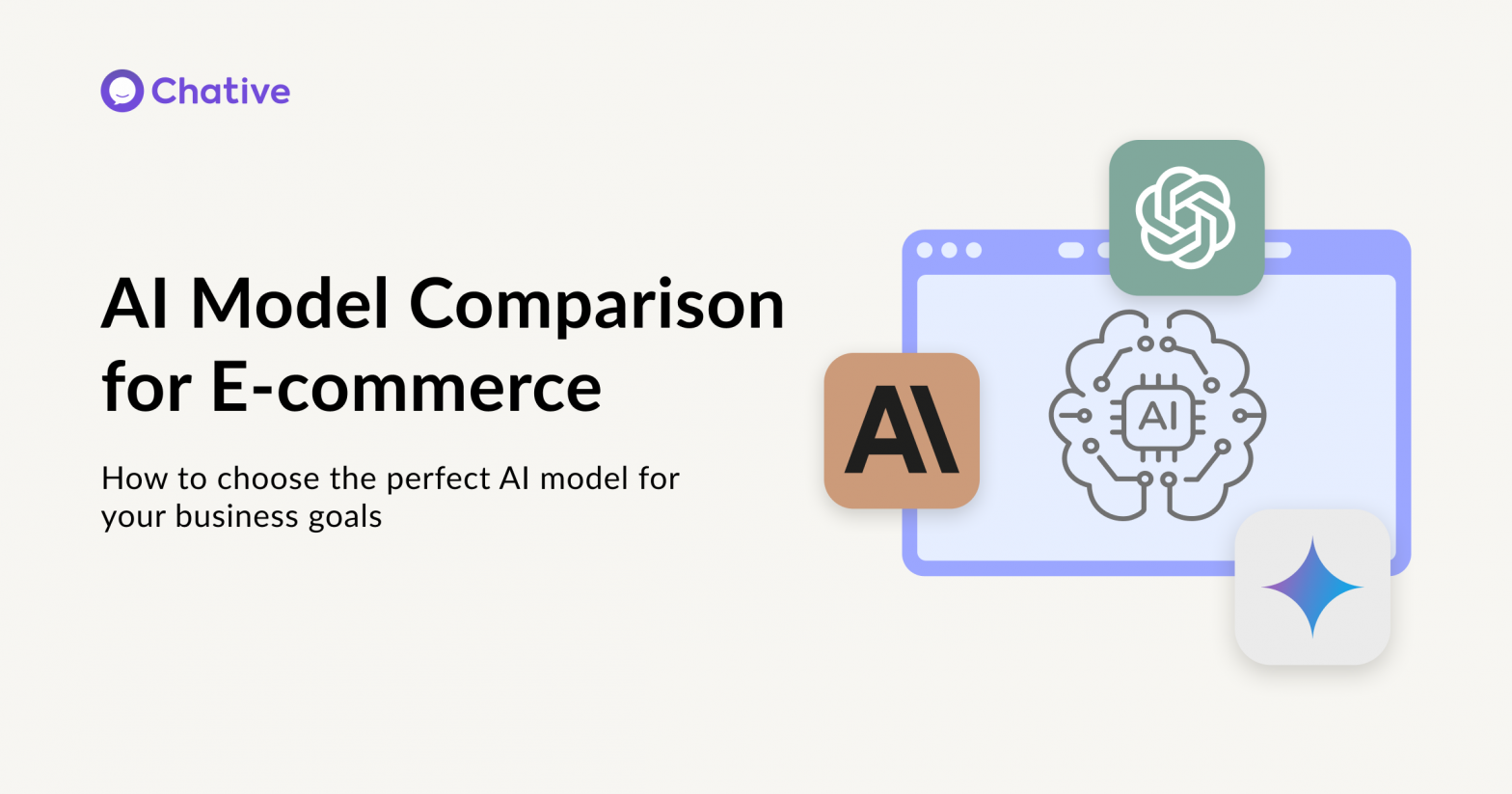AI in e-commerce not only changes how businesses operate but also opens opportunities to surpass competitors. This article will dive deeper into the criteria for selecting an AI model that best suits your business.
Why is AI the Key to E-Commerce?
In e-commerce, rapid growth and intense competition raise the question: How can we personalize customer experiences, boost sales, and optimize operations?
AI in e-commerce is the answer. Advanced AI models help businesses:
- Enhance the shopping experience: Faster searches and smarter recommendations.
- Optimize supply chains: Reduce inventory and prevent stockouts.
- Improve customer service: Chatbots that automatically respond based on real-life contexts.
Real-world examples:
- Amazon: Uses AI to recommend products that align with customers’ preferences, increasing conversion rates by up to 35%.
- Sephora: Sephora: Uses messenger chatbot service that includes Sephora Reservation Assistant (a chatbot that helps clients quickly identify store locations and make appointments) and Color Match (a bot that allows users to scan an image with a smartphone and instantly receive the closest color match from Sephora’s range of products).
5 Key Criteria for Selecting an AI Model for E-Commerce Businesses
When selecting the right AI model for your e-commerce business, it’s not just about functionality but also technical criteria to ensure performance and ROI. Here are five key criteria you shouldn’t overlook:
1. Quality
The quality of AI outputs is paramount. A high-quality AI model provides accurate results and remains reliable even in complex scenarios.
AI must accurately predict customer needs or analyze sales data. For example, a quality recommendation system helps customers find the right products, boosting conversion rates.
Google AI Gemini uses multimodal technology to analyze images and text simultaneously, improving recommendation accuracy and search experience.
Ensures outputs meet practical customer needs, from product recommendations to customer support.
Choose AI models that have been tested and validated for stable performance in the e-commerce field.
2. Cost
Deploying AI in business requires a careful balance between initial investment and long-term value.
- Flexible Costs: Models like Azure AI GPT-4o or AWS Claude offer tiered packages based on usage. For instance, small businesses can start with basic chatbots, while larger enterprises may invest in deeper data analysis solutions.
- Long-Term Benefits: While models like AWS Claude may have higher initial costs, they save businesses up to 25% in annual storage costs through optimized supply chains.
Don’t focus solely on initial costs. Consider the long-term operational efficiencies and revenue growth AI can bring.
3. Speed
The speed of AI directly impacts customer experience. Slow response times can result in higher bounce rates.
- Near-Instant Responses: Customers expect chatbots or search systems to respond within 1–2 seconds. Models like Azure AI GPT-4o handle thousands of simultaneous requests with millisecond response times.
- Real-World Example: A fashion retailer using Google AI Gemini reduced search times by 30%, keeping customers engaged longer on the site.
Opt for models with fast response times, particularly for real-time applications like chatbots or search.
4. Latency
Latency measures the time between a user action and the system’s response. Low latency is crucial for a seamless experience.
- Search Examples: Google AI Gemini minimizes latency in image searches, delivering results almost instantly. This is particularly vital in industries like fashion, where customers often compare products.
- Chatbot Interactions: Azure AI GPT-4o is designed for quick, context-aware responses, boosting customer satisfaction scores (CSAT) by 15%.
Ensure the AI model you choose has low latency, especially for applications requiring immediate feedback, like product searches or customer service.
5. Context window
The context window determines an AI model’s ability to retain prior interaction history or analyze extended datasets. A larger context window is critical for complex conversations.
- GPT-4o excels at retaining context during long conversations. For example, if a customer asks, “Is this product on sale?” followed by, “What about shipping costs?” the AI links both queries to the same product.
- Claude analyzes full-season sales data to accurately predict inventory needs for the upcoming season.
Choose AI models with larger context windows if your business requires in-depth conversations or extensive data processing.
Popular AI Models in E-Commerce
Here’s a detailed comparison of three leading AI models, helping e-commerce businesses make informed decisions:
| AI Model | Key Features | Applications in E-Commerce | Measured Impact |
|---|---|---|---|
| Google AI Gemini | – Smart search (image, voice). – Real-time data analysis via Google Ads. | – Image-based product search. – Personalized recommendations. – Dynamic ad optimization using real-time behavioral data. | – 20% increase in conversion rates. – 15% reduction in ad spend. – 30% ROI improvement in ad campaigns. |
| GPT-4o | – Advanced NLP for chatbots and content creation. – Behavioral analysis and forecasting. | – Smart chatbots for immediate, context-aware responses. – Automated product descriptions and email marketing. | – 30% cost reduction in customer service. – 15% increase in CSAT. – 20% revenue growth from personalized email campaigns. |
| Claude AI | – Demand forecasting and smart supply chain management. – Seamless integration with AWS ecosystem. | – Predicting inventory needs. – Automating customer support through chat and email. – Analyzing historical sales data. | – 25% reduction in storage costs. – 40% increase in customer request handling efficiency. – 30% fewer warehouse errors. |
Guidelines for Deploying AI in E-Commerce Businesses
AI in e-commerce has become an indispensable element for sustainable growth. However, to maximize the benefits of this technology, implementation should follow a structured process, with careful consideration of business goals and available resources.
1. Define business goals and challenges
Before integrating AI, businesses need to identify clear objectives and the challenges they aim to resolve:
- Are you looking to enhance customer experience or optimize operations?
- What are the biggest current issues? High cart abandonment rates? Excessive inventory costs?
Prioritize measurable goals, such as increasing conversion rates by 20% or reducing inventory costs by 15%.

2. Choose solutions aligned with budget and scale
Once goals are defined, the next step is selecting an AI solution in e-commerce that fits your budget and scale. Different business sizes require tailored solutions to maximize ROI.
- For small businesses:
- Integrate basic yet effective features such as chatbots for automated customer responses or personalized product recommendation systems.
- These solutions are cost-effective, easy to implement, and deliver quick results, like improving customer retention rates and enhancing the shopping experience.
- For large enterprises:
- Invest in more complex AI models, such as intelligent supply chain management, advanced customer data analytics, or fully automated customer service workflows.
- These systems not only optimize operations but also predict trends and support strategic decision-making.
Consider both initial costs and long-term value. Large-scale AI investments are advisable only when sufficient data and operational resources are available.
3. Ensure seamless integration with E-commerce platforms
One of the biggest challenges in implementing AI in business is ensuring seamless integration with existing systems:
- Make sure the AI system is fully compatible with platforms like Shopify, WooCommerce, or Magento.
- Synchronize ERP or CRM systems so customer and order data are unified across the board.
Partner with experienced AI integration providers to ensure a smooth process that doesn’t disrupt day-to-day business operations.

4. Train teams to use and manage AI effectively
Once AI is implemented, training and educating your team is crucial:
- Teach employees what AI is and how to manage and optimize the system in daily operations.
- Customer service teams should be trained on editing chatbot responses and fine-tuning the AI to deliver more accurate, customer-specific replies.
- Use intuitive dashboards to monitor AI performance metrics such as response rate, conversion rate, and more.
Assign a dedicated individual or team to oversee AI operations and ensure it’s running at peak efficiency.
5. Regularly optimize based on real-world data
AI is a technology that learns from data, so regular evaluations and adjustments will improve its performance:
- Monitor performance indicators (KPIs) such as response rates, processing time, and output accuracy.
- Continuously update the AI system with new data and insights to ensure it adapts to evolving customer needs and market trends.
Conclusion
By following these steps, businesses can successfully implement AI, ensuring it aligns with their goals while maximizing value across operations and customer experiences. AI is not static—it thrives on continuous optimization and learning to deliver the best results.
